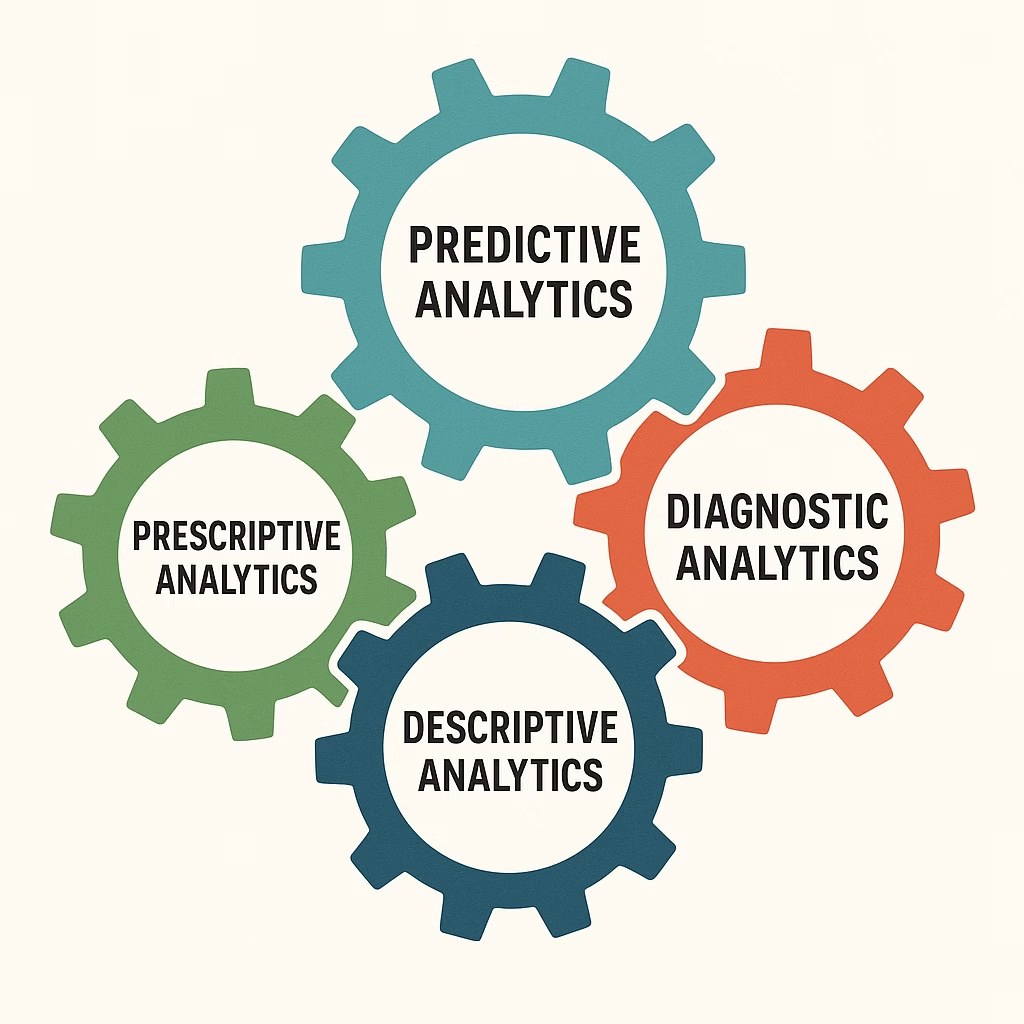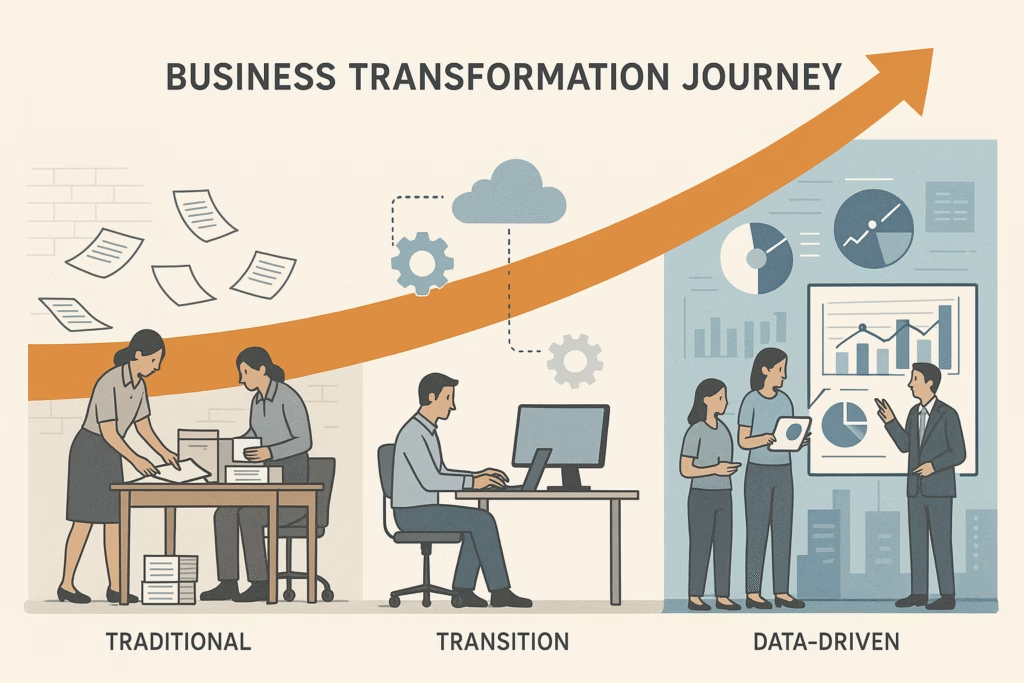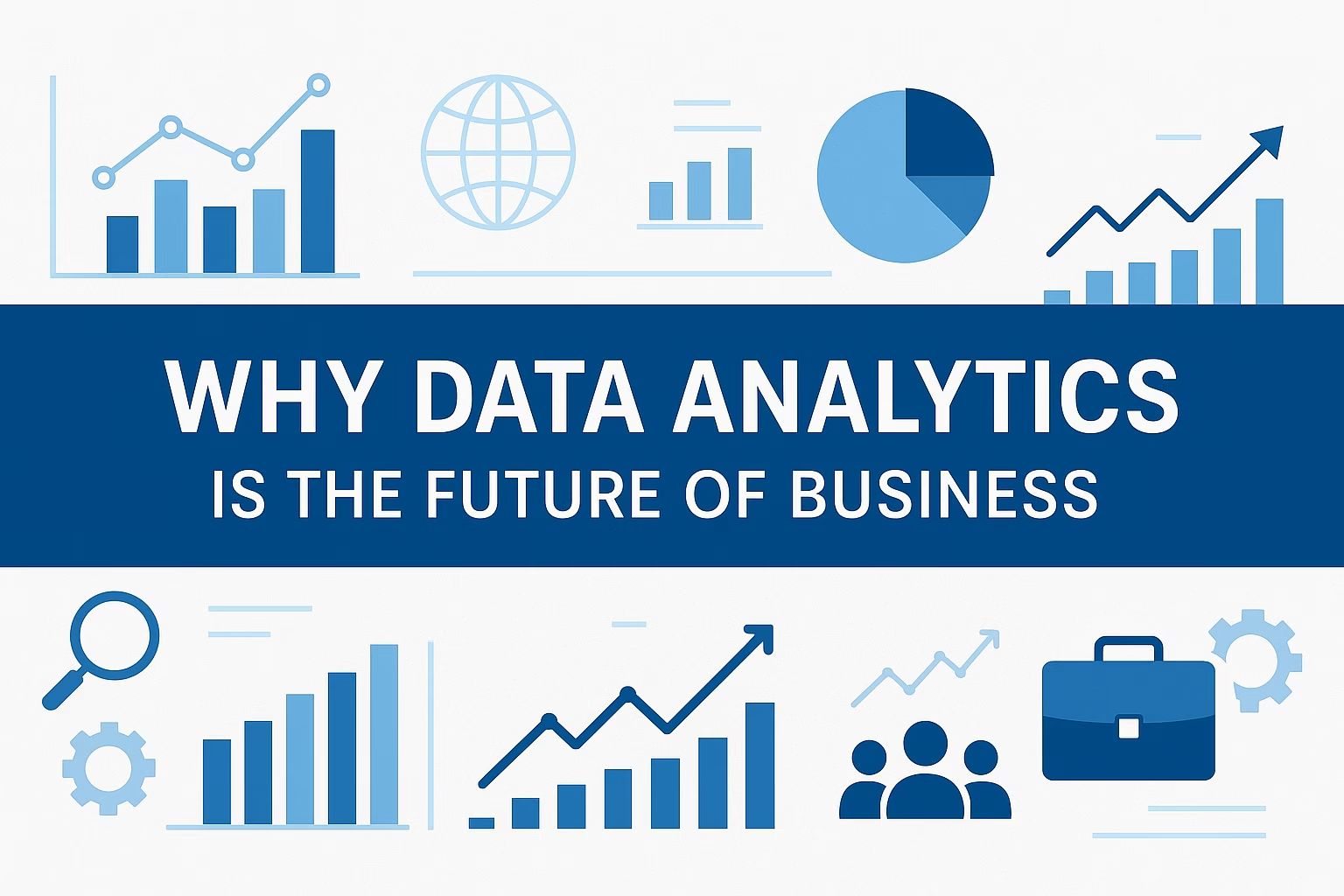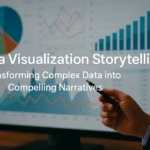The business world is experiencing a monumental shift. In an era where information flows at unprecedented speeds and volumes, data analytics has emerged as the defining force that separates thriving enterprises from those that struggle to keep pace. This transformation isn’t merely about having access to data—it’s about harnessing its power to unlock insights, drive innovation, and create sustainable competitive advantages.

Today’s organizations generate enormous amounts of data through every customer interaction, transaction, and operational process. However, raw data alone holds little value. The true power lies in transforming this data into actionable intelligence that guides strategic decisions, enhances customer experiences, and optimizes business performance. This is why data analytics has become not just a useful tool, but an essential capability for business success in the modern economy.
The Data Revolution: Understanding the Scale
The sheer magnitude of data generation in today’s world is staggering. Every day, humanity generates 2.5 quintillion bytes of data, with global data projected to reach 181 zettabytes by 2025. This exponential growth represents both an unprecedented opportunity and a significant challenge for businesses across all sectors.
What makes this data revolution particularly compelling is its universal impact. Companies that adopt data-driven decision-making are five times more likely to outperform their competitors, while organizations leveraging data-driven strategies are 23 times more likely to acquire customers and 19 times more profitable. These statistics aren’t just impressive numbers—they represent a fundamental shift in how successful businesses operate.
The COVID-19 pandemic further accelerated this trend. According to industry studies, 52% of companies expedited their AI adoption plans due to the crisis, demonstrating how data analytics became critical for navigating uncertainty and maintaining operational continuity during challenging times.
The Four Pillars of Data Analytics

Understanding why data analytics is the future of business requires examining its core components. There are four distinct types of analytics that work together to provide comprehensive business intelligence:
Descriptive Analytics: The Foundation
Descriptive analytics provides the essential foundation by summarizing historical data into understandable insights. This includes everything from monthly sales reports to customer demographic breakdowns. While seemingly basic, descriptive analytics offers crucial context that informs all other analytical approaches.
Organizations use descriptive analytics through both scheduled reports (like quarterly financial summaries) and ad-hoc reporting for addressing specific business questions. This foundation enables leaders to understand what has happened in their business and establishes baseline performance metrics.
Diagnostic Analytics: Understanding the Why
Diagnostic analytics delves deeper to uncover the root causes behind business outcomes. When revenue drops or customer satisfaction declines, diagnostic analytics helps identify the underlying factors driving these changes.
Through advanced querying and drill-down capabilities, businesses can discover correlations and causations that might otherwise remain hidden. This type of analysis is particularly valuable for continuous improvement initiatives and preventing recurring issues.
Predictive Analytics: Anticipating the Future
Predictive analytics represents the most commonly recognized form of data analysis, using historical patterns to forecast future trends. This includes both predictive modeling (anticipating campaign results based on demographic data) and statistical modeling (making sense of data to draw forward-looking conclusions).
The predictive analytics market is experiencing explosive growth, with augmented analytics projected to reach $32 billion by 2027, reflecting the increasing sophistication and value of these forecasting capabilities.
Prescriptive Analytics: Optimizing Actions
Prescriptive analytics goes beyond prediction to recommend specific actions. By combining big data with artificial intelligence, this advanced form of analysis suggests optimal strategies for achieving business objectives.
Through optimization techniques, businesses can identify improvement opportunities while maintaining effective existing practices. Random testing capabilities also enable exploration of previously untried combinations, potentially uncovering breakthrough strategies.
Transforming Business Operations Through Analytics

The impact of data analytics extends far beyond theoretical benefits, creating tangible improvements across all areas of business operations:
Personalizing Customer Experiences
Modern consumers expect personalized interactions, and data analytics makes this possible at scale. By analyzing customer behavior across multiple channels—purchase history, website interactions, social media engagement, and support conversations—businesses can tailor their offerings to individual preferences.
Netflix exemplifies this approach, with over 80% of content watched on the platform coming from its recommendation engine. This level of personalization has significantly boosted user engagement and reduced churn rates, demonstrating the direct revenue impact of analytics-driven customization.
Enhancing Strategic Decision-Making
Data analytics eliminates guesswork from critical business decisions. Whether evaluating market expansion opportunities, launching new products, or restructuring operations, analytics provides evidence-based insights that reduce risk and increase success probability.
According to recent research, 80% of enterprise leaders believe that accessing data helps with faster decision-making, while 87% of business leaders say data analytics is crucial for achieving growth and innovation.
Streamlining Operations and Reducing Costs
Operational efficiency improvements through analytics can deliver immediate bottom-line impact. By identifying bottlenecks, optimizing resource allocation, and predicting maintenance needs, organizations can significantly reduce operational costs while improving service delivery.
Companies using big data analytics have cut their maintenance costs by as much as 30%, demonstrating the concrete financial benefits of analytics implementation.
Strengthening Risk Management
Proactive risk management has become essential in today’s volatile business environment. Analytics enables organizations to identify potential threats—from fraud and cybersecurity risks to supply chain disruptions—before they materialize into significant problems.
American Express provides an excellent example, having notably reduced fraud through real-time transaction data analysis. By identifying unusual patterns instantly, they can flag potentially fraudulent transactions, saving millions while enhancing customer trust.
Driving Innovation and Product Development
Data analytics fuels innovation by revealing unmet customer needs and market opportunities. Amazon’s expansion into grocery retail through Amazon Fresh and Whole Foods demonstrates this principle in action.
By analyzing historical purchase patterns, weather forecasts, social media trends, and cultural events, Amazon predicts customer demand and optimizes inventory management. This data-driven approach to product development and service delivery has enabled successful expansion into new markets.
Industry-Specific Success Stories
The transformative power of data analytics becomes even more apparent when examining specific industry applications:
Healthcare: Predictive Patient Care
Healthcare organizations are using predictive analytics to improve patient outcomes while reducing costs. The Cleveland Clinic successfully lowered readmission rates by 25% through predictive analytics, identifying high-risk patients and customizing care plans accordingly.
By 2025, the healthcare industry is expected to generate 2,314 exabytes of data per year, creating enormous opportunities for continued innovation in patient care and operational efficiency.
Manufacturing: Predictive Maintenance
General Electric revolutionized manufacturing through IoT devices and analytics for predictive maintenance. By predicting equipment failures before they occur, GE has saved millions in repair costs while preventing costly production downtime.
Financial Services: Enhanced Fraud Detection
The financial sector leverages analytics as a critical defense against fraudulent activities. Beyond American Express’s success, UOB Bank implemented an AI-powered Anti-Money Laundering system that reduced risk assessment time from 18 hours to minutes, enabling faster and more informed financial decisions.
Retail: Dynamic Pricing and Inventory Optimization
Walmart and other major retailers use analytics to optimize inventory levels, predict seasonal demand, and implement dynamic pricing strategies. This data-driven approach enables better resource allocation and improved customer satisfaction through product availability.
Transportation: Route Optimization
Uber’s dynamic pricing model relies heavily on real-time data analysis. By analyzing traffic conditions, supply and demand patterns, and weather data, Uber adjusts prices to optimize driver availability and passenger convenience, demonstrating the power of real-time analytics in service delivery.
The Future Landscape: Key Trends for 2025 and Beyond
Several critical trends are shaping the future of data analytics:
Artificial Intelligence Integration
AI and machine learning are becoming integral to analytics platforms. Nearly 65% of organizations have adopted or are actively investigating AI technologies for data and analytics, with this integration enabling more sophisticated predictive capabilities and automated decision-making.
Real-Time Analytics
The demand for instant insights is driving the growth of real-time analytics. By 2025, more than 50% of data will be processed in edge computing environments, enabling faster response times and more agile business operations.
Self-Service Analytics
The democratization of analytics tools is empowering non-technical users to generate insights independently. The global self-service BI market is projected to grow from $6.73 billion in 2024 to $27.32 billion by 2032, reflecting the increasing demand for user-friendly analytical capabilities.
Cloud-Based Solutions
Cloud analytics platforms are becoming the standard for scalable data processing. These solutions offer cost-effectiveness, flexibility, and the ability to integrate multiple data sources seamlessly, making advanced analytics accessible to organizations of all sizes.
Enhanced Data Security and Governance
As data becomes increasingly valuable, security and governance are paramount concerns. Data security, privacy, and data quality management are identified as the most important trends by practitioners, driving investment in robust protection measures and compliance frameworks.
The Economic Impact: Market Growth and Career Opportunities
The economic significance of data analytics continues to expand rapidly:
Market Growth Projections
The global data analytics market was valued at $64.99 billion in 2024 and is projected to reach $402.70 billion by 2032, exhibiting a CAGR of 25.5%. This extraordinary growth rate reflects the increasing recognition of analytics as a critical business capability.
The big data analytics market is projected to hit $655.53 billion by 2029, while the business intelligence market is expected to reach $54.27 billion by 2030.
Career Opportunities and Salary Growth
The job outlook for data analytics professionals is exceptionally positive. The US Bureau of Labor Statistics predicts a 23% increase in data analytics roles by 2032, significantly outpacing growth in other fields.
Data analyst salaries have increased by $20,000 since 2024, with the current average at $111,000, demonstrating strong market demand and the value organizations place on analytical skills.
Jobs in data-related fields are expected to grow by 36% by 2031, creating abundant opportunities for both new entrants and experienced professionals looking to transition into this dynamic field.
Implementation Strategy: Making Analytics Work for Your Business
Successfully leveraging data analytics requires a structured approach:
Step 1: Define Clear Objectives
Establish specific, measurable goals for your analytics initiatives. Whether improving customer retention, reducing operational costs, or identifying new market opportunities, clear objectives provide direction and success metrics.
Step 2: Invest in Data Infrastructure
Build robust systems for collecting, storing, and processing data. This includes implementing appropriate tools like Microsoft Power BI, Tableau, or similar platforms that can integrate multiple data sources and provide comprehensive business insights.
Step 3: Develop Analytical Capabilities
Invest in both technology and talent. This means acquiring the right analytical tools and either hiring skilled data professionals or training existing staff to use these capabilities effectively.
Step 4: Foster a Data-Driven Culture
Create an organizational culture where data informs every decision. This requires leadership commitment, cross-functional collaboration, and continuous learning to ensure analytics insights translate into business value.
Step 5: Measure and Iterate
Continuously evaluate the impact of your analytics initiatives and refine your approach. The most successful organizations treat analytics as an ongoing capability that evolves with their business needs and technological advances.
Overcoming Implementation Challenges
While the benefits of data analytics are clear, organizations often face several challenges:
Data Quality and Integration
Ensuring data accuracy and combining information from multiple sources remains a significant challenge. Organizations must invest in data cleansing and integration processes to ensure reliable insights.
Privacy and Compliance
With increasing regulations like GDPR and CCPA, organizations must balance analytical capabilities with privacy protection. This requires implementing appropriate governance frameworks and security measures.
Skills Gap
The demand for analytics talent often exceeds supply. Organizations need strategies for developing internal capabilities while competing for skilled professionals in a tight job market.
Technology Integration
Integrating new analytics tools with existing systems can be complex and costly. Successful implementation requires careful planning and often significant IT infrastructure investments.
Global Adoption and Regional Trends
Data analytics adoption varies significantly by region and industry:
The United States dominated the big data and business analytics market in 2021, capturing 51% of total market share. South Korea leads OECD countries in big data analytics adoption with a 40% adoption rate.
India’s big data technology and services market is projected to reach $2.34 billion in 2025 and $3.38 billion by 2030, representing significant growth opportunities in emerging markets.
In India specifically, the data analytics market is expected to grow by 35.8% from 2025 through 2030, making it an particularly attractive region for analytics investments and career development.
The Competitive Imperative
Organizations that fail to embrace data analytics risk being left behind. Companies that employ data-driven decision-making increase their operational productivity by 63%, while organizations with efficient BI tools and technologies have five times more reaction time to capitalize on new opportunities.
The examples of successful companies like Amazon, Netflix, Google, Coca-Cola, and Uber demonstrate that data analytics isn’t just about operational efficiency—it’s about creating entirely new business models and competitive advantages that are difficult for competitors to replicate.
Looking Ahead: The Next Decade
The future of data analytics extends far beyond current capabilities. Emerging trends like:
- Augmented analytics that combines AI with human insight
- Edge computing for real-time processing
- Natural language processing for conversational data interaction
- Synthetic data generation for enhanced privacy and testing
These developments will continue expanding the possibilities for data-driven business transformation.
By 2030, 170 million new jobs are projected to be created globally, with many requiring data and analytical skills. This represents not just career opportunities but a fundamental shift in how work gets done across all industries.
Conclusion
Data analytics isn’t simply a technological trend or business fad—it represents a fundamental shift in how successful organizations operate, compete, and create value. The evidence is overwhelming: companies that embrace data-driven decision-making consistently outperform their peers, adapt more quickly to market changes, and create more sustainable competitive advantages.
The convergence of increasing data volumes, advancing analytical technologies, and growing business awareness of analytics value has created a perfect storm of opportunity. With the global data analytics market projected to grow from $64.99 billion in 2024 to $402.70 billion by 2032, organizations have a limited window to establish analytics capabilities before they become table stakes for market participation.
The question isn’t whether data analytics will shape the future of business—it’s whether your organization will be among those leading this transformation or struggling to catch up. The time for action is now. The data is clear: the future belongs to organizations that can effectively harness the power of analytics to drive innovation, optimize operations, and create exceptional customer experiences.
For professionals considering their career paths, the opportunity is equally compelling. With data analytics roles growing by 23% through 2032 and average salaries increasing by $20,000 in just the past year, this field offers both financial rewards and the chance to be at the forefront of business transformation.
The future of business is data-driven. The organizations and professionals who recognize this reality and act decisively will define the next era of economic growth and innovation. The analytics revolution isn’t coming—it’s here, and it’s reshaping everything.



